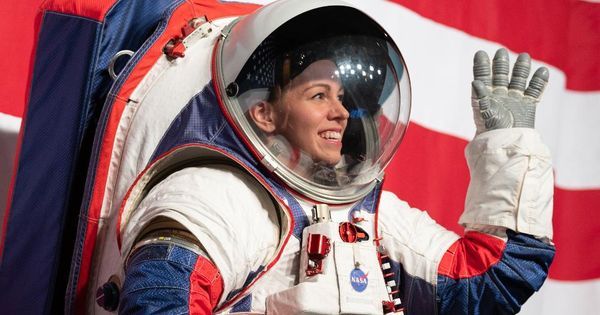Neil deGrasse Tyson talks candidly about the challenges facing astronomy and the search for life outside the solar system.



Most people think of space as a flat sheet: You travel in one direction, and you end up far from your starting point. But a new paper suggests that the universe may in fact be spherical: If you travel far enough in the same direction, you’d end up back where you started.
Based on Einstein’s theory of relativity, space can bend into different shapes, so scientists assume the universe must be either open, flat, or closed. Flat is the easiest shape to understand: it is how we experience space in our everyday lives, as a plane in which a beam of light would extend off into infinity. An open universe would be saddle-shaped, with a beam of light bending across the curvature. And a closed universe would be a sphere, with a beam of light eventually looping back around it to meet its origin.
In order to tell which shape our universe is, scientists can look at a phenomenon called the cosmic microwave background (CMB). This is the electromagnetic radiation which remains from the Big Bang, also called “relic radiation.” It fills all of space and can be detected with a sufficiently powerful radio telescope.


On the first page of Heinz Koop’s fecal analysis test results, a bar showed where he fell on a gradient from green to red. A label above said, in German: “Overall dysbiosis.” Koop was not in the green or even the yellow regions, but a worrisome orange. It was a bad result — but, he says, “I was kind of happy.”
Doctors hadn’t given him a satisfying answer about his recurring bloody diarrhea and other gut troubles. But Koop had learned on Facebook that he could test his gut microbiome — the community of bacteria and other organisms living in his gastrointestinal tract — to look for problems. Koop ordered a test from a German laboratory called Medivere. The results said his gut microbes were imbalanced, which was something he thought he could treat. Soon he would be attempting to correct this imbalance by chauffering a friend’s fresh stool samples home to implant up his own colon.
Trillions of microbes living on and in our bodies, especially our guts, make up our microbiome. The bugs in our bowel are not just there to slow down our poop, as one researcher speculated in 1970, but are intricately connected to our health. Gut microbes help us digest our food, make critical vitamins, and keep pathogens out. Over the past decade or so, research into the microbiome has exploded as researchers have tried to tease apart the complex connections between our diseases and our resident microbes.


OpenAI’s text generator, machine learning-powered—so powerful that it was thought too dangerous to release to the public, has, guess what, been released.
OpenAI published a blog post announcing its decision to release the algorithm in full as it has “seen no strong evidence of misuse so far.”
Well, that was a turnaround.


San Francisco, Nov 10 (IANS) Google’s cybersecurity project named “Chronicle” is imploding in trouble and some employees feel its management “abandoned and betrayed” the original vision, media reports said.
Chronicle’’s CEO and Chief Security Officer have already left and the Chief Technology Officer is leaving later this month while other key officials are eyeing an exit, according to the Motherboard.
In June this year, Chronicle lost its status as an independent entity when it formally joined Google to become part of its Cloud security offerings.

